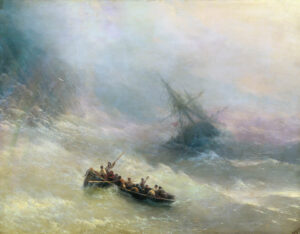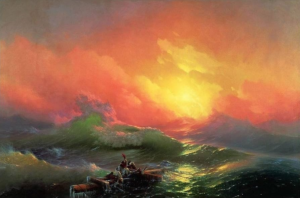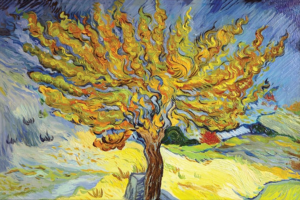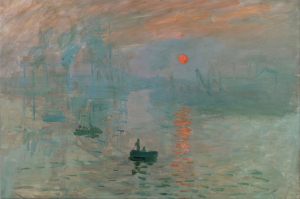Henri Matisse is widely considered one of the greatest artists of the 20th century, known for his innovative use of color and form. Throughout his career, Matisse produced countless masterpieces that continue to captivate and inspire art lovers today. In this article, we will explore some of Matisse’s best paintings, highlighting the qualities that make each work so significant.
1- The Dance (1909-1910)

“The Dance” is perhaps Matisse’s most iconic painting, featuring five dancers in a circular formation. The figures are rendered in bold, flat colors and stylized forms, conveying a sense of movement and energy that is both captivating and exhilarating. Matisse’s use of color in this painting is particularly striking, with rich, vibrant hues that seem to glow from the canvas. “The Dance” is a testament to Matisse’s mastery of color and his ability to capture the spirit of movement in his paintings.
2- The Red Studio (1911)

“The Red Studio” is a striking and memorable painting that features a simplified interior space dominated by vivid reds, blues, and greens. Matisse’s use of color in this painting is masterful, creating a sense of depth and space through the careful arrangement of planes and forms. The painting is notable for its boldness and simplicity, emphasizing the power of color and form.
3- Woman with a Hat (1905)

“Woman with a Hat” is one of Matisse’s most controversial paintings, featuring his wife Amélie wearing a vividly colored hat against a brightly patterned background. The brushstrokes are loose and expressive, creating a sense of boldness and vitality that was groundbreaking for its time. The painting caused a scandal when it was first exhibited, but its bold use of color and expressive style helped to pave the way for the artistic revolution that was to come.
4- La Danse II (1932-33)

“La Danse II” is a later version of “The Dance,” featuring a larger, more complex composition with additional figures and a greater sense of movement and energy. The painting is notable for its bold use of color and the dynamic interplay between the figures. “La Danse II” is a testament to Matisse’s continued innovation and experimentation throughout his long career.
5- The Joy of Life (1905-06)

“The Joy of Life” is a lush and sensual painting of a group of nude figures in a pastoral setting. The composition is harmonious and balanced, with vibrant colors that seem to pulsate with life. The painting captures the vitality and joy of life itself, with a sense of exuberance and optimism that is typical of Matisse’s work.
6- The Piano Lesson (1916)

“The Piano Lesson” features two figures in an interior space, with bold, expressive brushstrokes and a strong sense of emotional resonance. The painting captures the intimacy and tenderness of the moment, with the figures absorbed in their shared activity. The use of color in this painting is muted and subtle, highlighting the emotional weight of the scene.
7- Canal du Midi (1906)

“Canal du Midi” was created in 1906 during Matisse’s travels to the south of France. The painting depicts a serene and idyllic scene of a canal lined with trees, with a house in the background. The painting is characterized by the use of bold and bright colors, with the trees and water rendered in vibrant shades of green and blue. The composition of the painting is simple, with a clear focus on the canal and its surroundings.
You can shop “Canal du Midi” print reproduction from our site. Check out our collection of fine art prints to display in your home.











